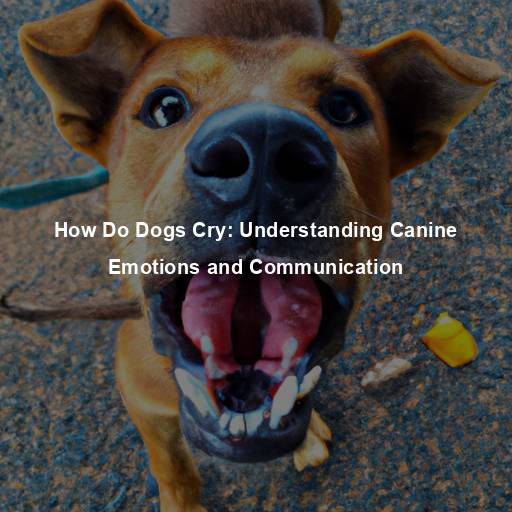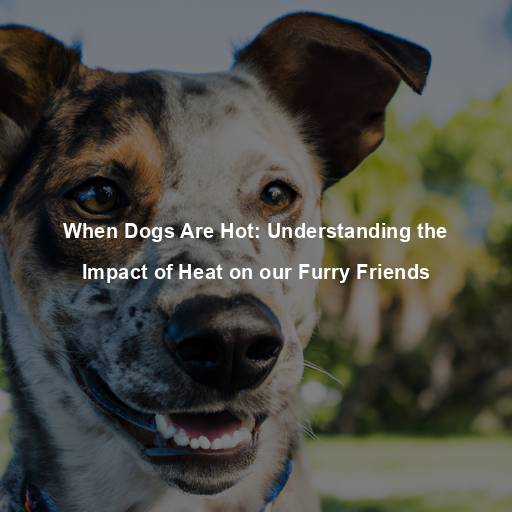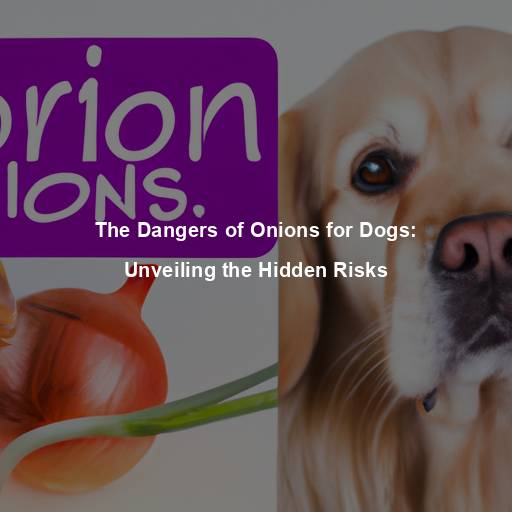How Do Dogs Cry: Understanding Canine Emotions and Communication
Last Updated on August 4, 2023 by Evan
Contents
Throughout history, dogs have captivated our hearts with their enigmatic ability to convey a multitude of emotions. From pure jubilation to gripping fear, these four-legged companions have an uncanny knack for tugging at our heartstrings. But have you ever stopped to ponder if dogs cry in the same way we do? It’s a perplexing thought, indeed.
Unraveling the Canine Emotional Spectrum
As we embark on an exploration of the intriguing world of canine tears, it becomes imperative to delve into the intricate tapestry of emotions that envelop our beloved furry companions. Like us, dogs traverse a vast spectrum of feelings, encompassing elation, affection, trepidation, restlessness, and even sorrow. Yet, their mode of articulating these sentiments diverges markedly from our own, oftentimes leaving us perplexed and captivated.
Can Dogs Shed Tears?
One of the most common questions that pet owners ask is whether dogs can shed tears. While dogs do not cry tears of emotion like humans, they do produce tears for a different purpose. Tears in dogs primarily serve to lubricate and protect their eyes from irritants, much like humans. However, it is important to note that excessive tearing or tear-stained fur around the eyes could indicate an underlying health issue and should be examined by a veterinarian.
Understanding Canine Emotional Cues
Although dogs may not physically cry tears of emotion, they possess a wide array of emotional cues that they use to communicate their feelings. By paying close attention to these cues, we can gain a deeper understanding of our furry companions’ emotional state.
Body Language
Dogs, these captivating creatures, possess an intricate language of their own, mystical and enigmatic. In those moments of vulnerability and melancholy, their silent expressions become an evocative symphony of tales untold. With drooping ears and a tail tucked away, their bodies echo whispers of sorrow and distress, as hunched postures and darting eyes exude a complex tapestry of emotions left unspoken. Yet, amidst the labyrinth of canine communication, the visage of elation emerges like a burst of sunlight; a wagging tail, a relaxed stance, and a pair of radiant, alert eyes dance harmoniously, revealing the jubilance within.
Vocalizations
While dogs are not capable of shedding tears, they can vocalize their emotions through various sounds. Whining, whimpering, or howling are common vocalizations that dogs use to express their distress, anxiety, or even loneliness. On the other hand, barks, yips, and playful growls can signify excitement, happiness, or a desire to engage in play.
Facial Expressions
The enchanting world of dogs never ceases to amaze us mere mortals. These captivating creatures possess a myriad of ways to communicate their innermost emotions through the canvas of their expressive faces. In moments of melancholy or unease, their furrowed brows, droopy ears, and downturned mouths speak volumes of their poignant state. But behold the joyous flip side – the virtuosic display of happiness, radiating through their sparkling, wide eyes, relaxed mouths, and overall countenance of pure bliss.
The Power of Empathy: Can Dogs Sense Human Emotions?
Dogs have an uncanny ability to sense and respond to human emotions. They are highly attuned to our emotional state and can often provide comfort and solace during times of distress or sadness. Many pet owners have experienced moments where their dogs seem to understand when they are feeling down and offer their presence as a source of support.
Oxytocin and the Human-Canine Bond
Scientific research has shown that interactions between humans and dogs can trigger the release of oxytocin, often referred to as the “love hormone”. Oxytocin is associated with feelings of bonding, trust, and love. This hormonal response may explain why dogs are so adept at sensing and responding to human emotions, creating a deep and meaningful connection between humans and their canine companions.
Dogs as Emotional Support Animals
The unique ability of dogs to sense and respond to human emotions has led to their widespread use as emotional support animals. These specially trained dogs provide comfort, companionship, and assistance to individuals who may be experiencing emotional or psychological distress. Their innate ability to empathize and understand human emotions makes them invaluable in providing emotional support to those in need.
The Role of Tears in Dogs
As mentioned earlier, dogs produce tears for a different purpose than humans. Tears in dogs primarily serve to lubricate and protect their eyes from irritants. Excessive tearing or tear-stained fur around the eyes could indicate a health issue, such as allergies or an eye infection, and should be addressed by a veterinarian.
Emotional Release in Dogs
Dogs, like tearless companions, possess an inherent ability to unleash their emotions through unconventional means. In parallel to our kind, these four-legged creatures can find solace in activities that grant them the liberty to untangle their emotional knots. Whether through engaging in rigorous physical exercises, indulging in playful encounters with playthings, or partaking in stimulating interactive games, dogs acquire the prowess to alleviate their anxieties and articulate their sentiments in a way that promotes their overall well-being.
The Complexity of Canine Emotions
The world of canine emotions is a fascinating one, full of twists and turns that can leave us both intrigued and bewildered. While dogs undoubtedly feel a range of emotions, it’s important to remember that their emotional journey may not always align with our own. Happiness, fear, anger, and even sadness may take on unexpected shapes and shades in their world, inviting us to explore the complexities of their unique emotional landscape.
Can Dogs Feel Sadness?
Curiosity lingers in the minds of pet enthusiasts as they ponder the depths of canine emotion. Though we may witness melancholic behaviors in dogs, we must embrace the enigma that shrouds their emotional realm. Whether it be triggered by shifts in their surroundings, the longing for their human companions, or the void left by a departed comrade, dogs undeniably experience an array of sentiments. As devoted guardians, it is our duty to offer solace and empathy, guiding our four-legged counterparts through the labyrinth of their feelings.
Empathy in Dogs
Dogs possess a remarkable talent for tuning in to the emotional wavelengths of their human companions. It’s almost as if they have a sixth sense, able to detect when their owners are experiencing melancholy or distress. This uncanny ability seems to stem from their acute sensitivity to subtle shifts in body language, vocal intonations, and even the faintest aroma. While they may not grasp the intricate nuances of human feelings, dogs offer solace and a non-judgmental ear, standing by our side through life’s enigmatic emotional tapestry.
Understanding Canine Communication
Unlocking the enigmatic code of canine communication is no mean feat. Dogs, complex creatures that they are, employ a mesmerizing blend of physical gestures, earnest vocalizations, and intricate facial expressions to articulate their innermost thoughts. Through a careful and observant lens, we can begin unraveling the enigmatic messages our four-legged companions convey, gleefully responding in the language they so adeptly speak.
Body Language and Emotion
A dog’s body language can provide valuable insights into their emotional state. When a dog is happy, they may exhibit a relaxed body posture, a wagging tail, and an open mouth. Conversely, when a dog is anxious or fearful, they may display signs such as a tucked tail, ears pulled back, and a tense or crouched posture. By observing these cues, we can gauge our dog’s emotional well-being and provide appropriate support.
Vocalizations and Emotion
Dogs have a captivating way of expressing their feelings through a wide range of vocalizations. From the heart-rending whines and plaintive whimpers that convey their uneasiness or fearfulness to the soul-stirring howls hinting at their discomfort, these vocal cues act as a perplexing form of communication. They are like cryptic messages begging for our attention, signaling that something isn’t quite right in the world of our furry friends. Yet, amidst this symphony of sounds, there are also barks, yips, and even those playful growls that resonate with pure joy, excitement, or an unyielding desire to partake in a spirited game.
Facial Expressions and Emotion
Have you ever noticed how our canine companions, those furry bundles of joy, communicate their feelings through their expressive faces? It’s truly fascinating! Those relaxed facial muscles, sparkling eyes, and those adorable slightly open mouths speak volumes about their contentment and happiness. On the flip side, when their eyes narrow, their mouths tense, or their brows furrow, it’s a telltale sign of fear, anxiety, or perhaps even aggression.
Nurturing Emotional Well-being in Dogs
As responsible pet owners, it is our duty to prioritize the emotional well-being of our dogs. By creating a nurturing and supportive environment, we can help them navigate their emotions in a healthy way.
Providing a Stable Environment
Dogs thrive in stable and predictable environments. Establishing routines, providing consistent training, and ensuring a safe and comfortable living space can contribute to their emotional well-being. Dogs feel secure when they have a clear understanding of their daily routines and expectations.
Socialization and Positive Experiences
Dogs, those social butterflies of the animal kingdom, thrive on connections and encounters that sculpt their emotional growth. By immersing these four-legged companions in the delightful world of diverse people, animals, and surroundings early on, we grant them the gift of confidence and forge a roadmap to a happy existence. Moreover, engaging these furry wonders in captivating activities like obedience training, exhilarating agility classes, and well-monitored playdates not only fires up their minds but also ignites a sense of emotional fulfillment.
Bonding and Affection
Building a strong bond with our dogs is essential for their emotional health. Spending quality time together, engaging in activities they enjoy, and providing affectionate gestures such as gentle petting, cuddling, and verbal praise can strengthen the bond between humans and their canine companions. This bond serves as a source of comfort and security for dogs, enhancing their emotional well-being.
FAQs for How Do Dogs Cry
What does it mean when a dog cries?
When a dog sheds tears, it’s a perplexing signal that something is amiss in their little world. Much like humans, our furry friends use a variety of communication methods to convey their inner turmoil. From vocalizations to body language and even facial expressions, they leave us guessing the true meaning behind their heartfelt cries. Whether it’s a plaintive whine, a pitiful whimper, or a soul-stirring howl, understanding the context and unique circumstances is key to unravelling the enigma of canine tears.
Do dogs cry tears like humans?
Contrary to popular belief, dogs and their teardrops don’t quite share the same sentimental connection as us humans. While tears serve as these complex emotional outlets in our world, our furry friends have a different reason behind those shimmering eyeballs. It turns out, tears for dogs are a form of eye maintenance – their tear ducts have a unique talent for producing those watery wonders to keep their peepers moisturized and free from pesky debris. So, the next time you witness your pooch’s tearful gaze, it’s more likely a result of excessive tear production or a not-so-favorable eye blockage caused by allergies or other ocular issues. Mind-blowing, isn’t it?
Can dogs cry emotionally?
Dogs do experience emotions, and they can display signs of sadness, anxiety, or distress, which could be interpreted as emotional crying. However, it is important to note that dogs do not cry tears as a direct expression of their emotions. They primarily communicate their emotional states through body language, vocalizations, and behavioral changes. If a dog appears to be crying emotionally, it is more likely that they are exhibiting other signs associated with their emotions, such as changes in their posture, expression, or appetite.
What are common reasons for dogs to cry?
Dogs can cry or exhibit behaviors similar to crying for several reasons. Some common causes include physical pain or discomfort, separation anxiety, fear or stress, boredom, attention-seeking, or a response to specific sounds or stimuli. It is crucial to observe and assess the context in which a dog is crying to identify the underlying cause and provide appropriate care or intervention if necessary. Consulting a veterinarian or a professional dog behaviorist can help establish the reason behind a dog’s crying behavior.
How can I help a crying dog?
To help a crying dog, first, try to identify the reason behind their crying by observing their environment and behavior. If the cause of their distress is apparent, such as physical injury or discomfort, seek veterinary care immediately. If the crying is attributed to separation anxiety or fear, gradually introducing desensitization techniques and positive reinforcement training can be beneficial. Providing a comforting and safe space, engaging in interactive play, ensuring regular exercise, and maintaining their overall well-being through proper nutrition and grooming can also contribute to minimizing crying episodes in dogs.
Should I be concerned if my dog cries excessively?
When it comes to our furry friends, deciphering their cries can be as baffling as trying to solve a Rubik’s Cube blindfolded. If your beloved pooch starts channeling their inner drama queen with a sudden burst of wails, it’s time to put on your detective cap. While some occasional whimpers can be as harmless as a false alarm, a persistent or heightened crying episode might hint at something more serious brewing beneath the surface. Don’t second-guess yourself; reach out to a seasoned veterinarian to unravel the enigma behind your pup’s tears. After all, peace of mind is priceless when it comes to our four-legged companions.







